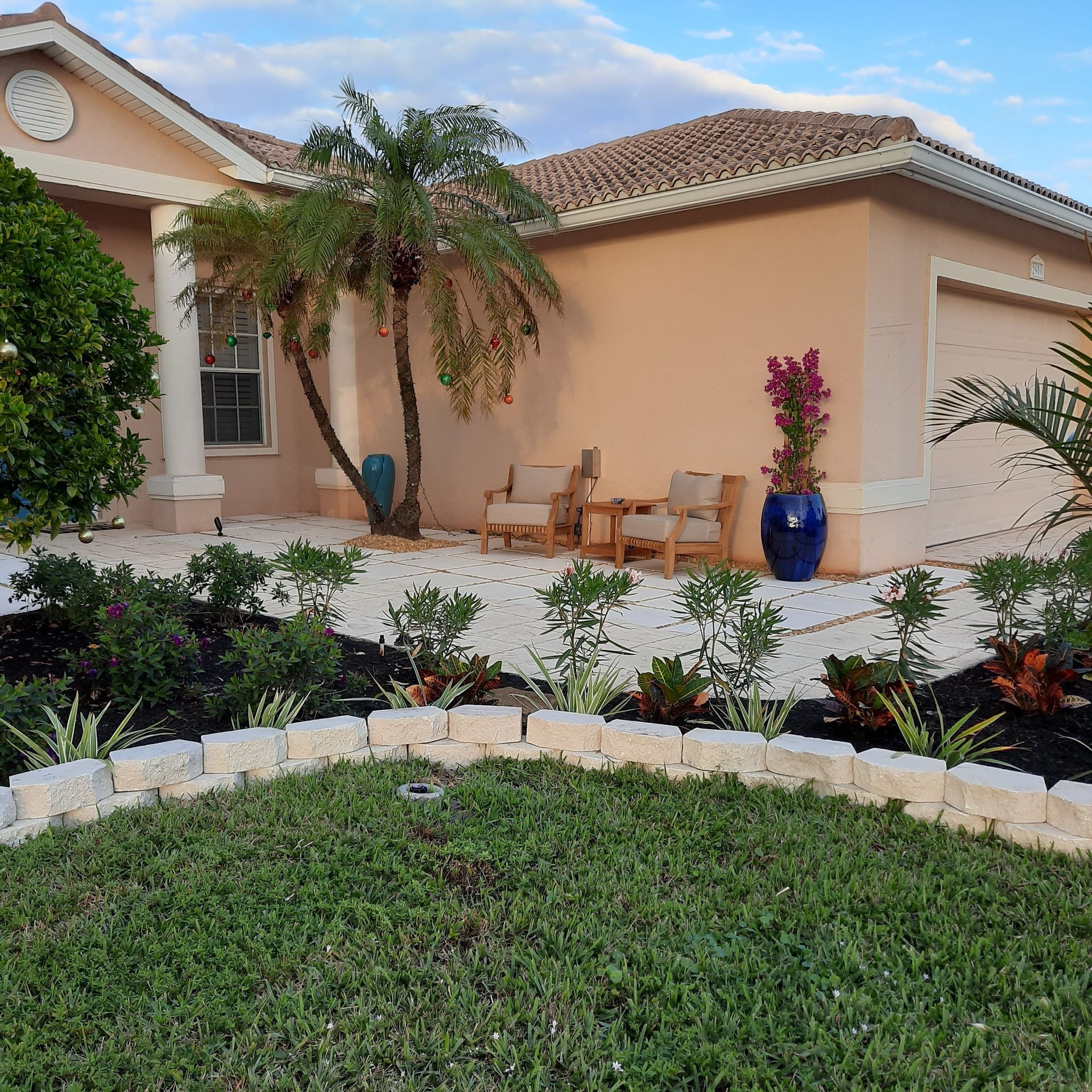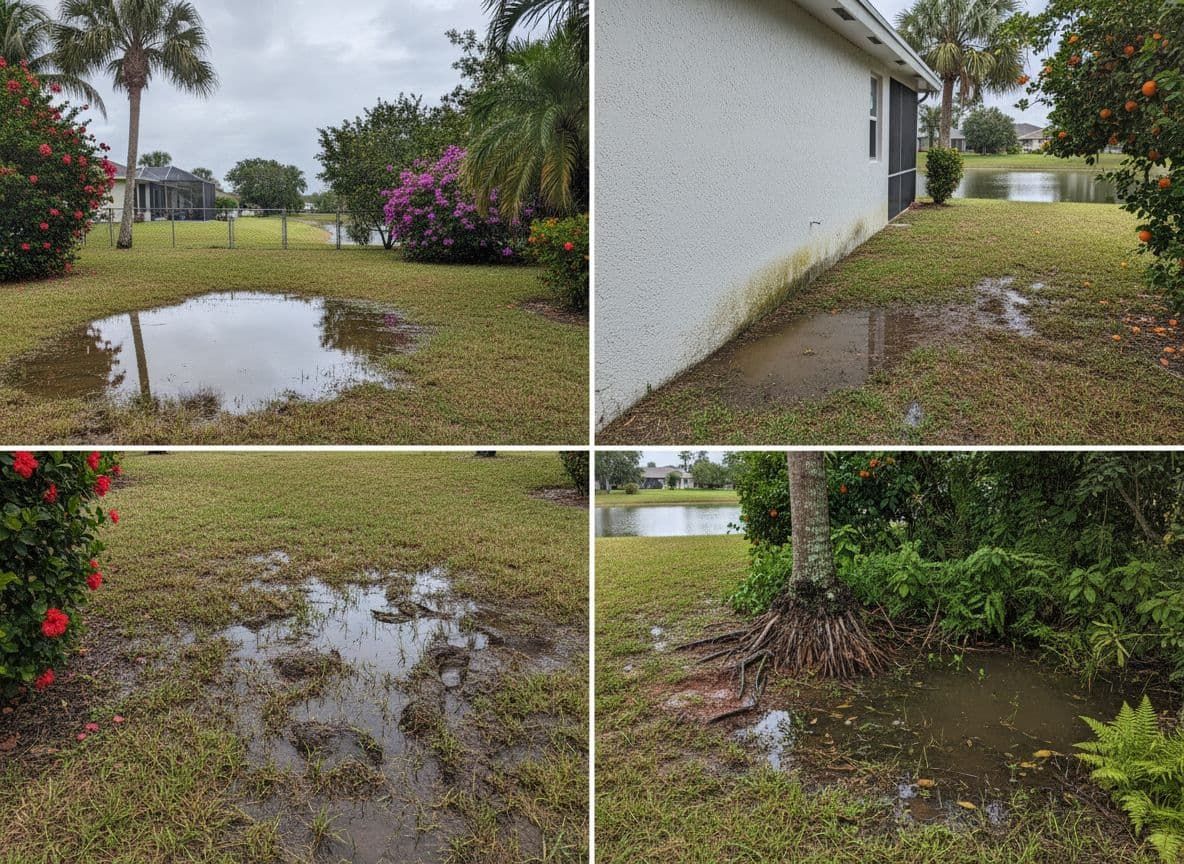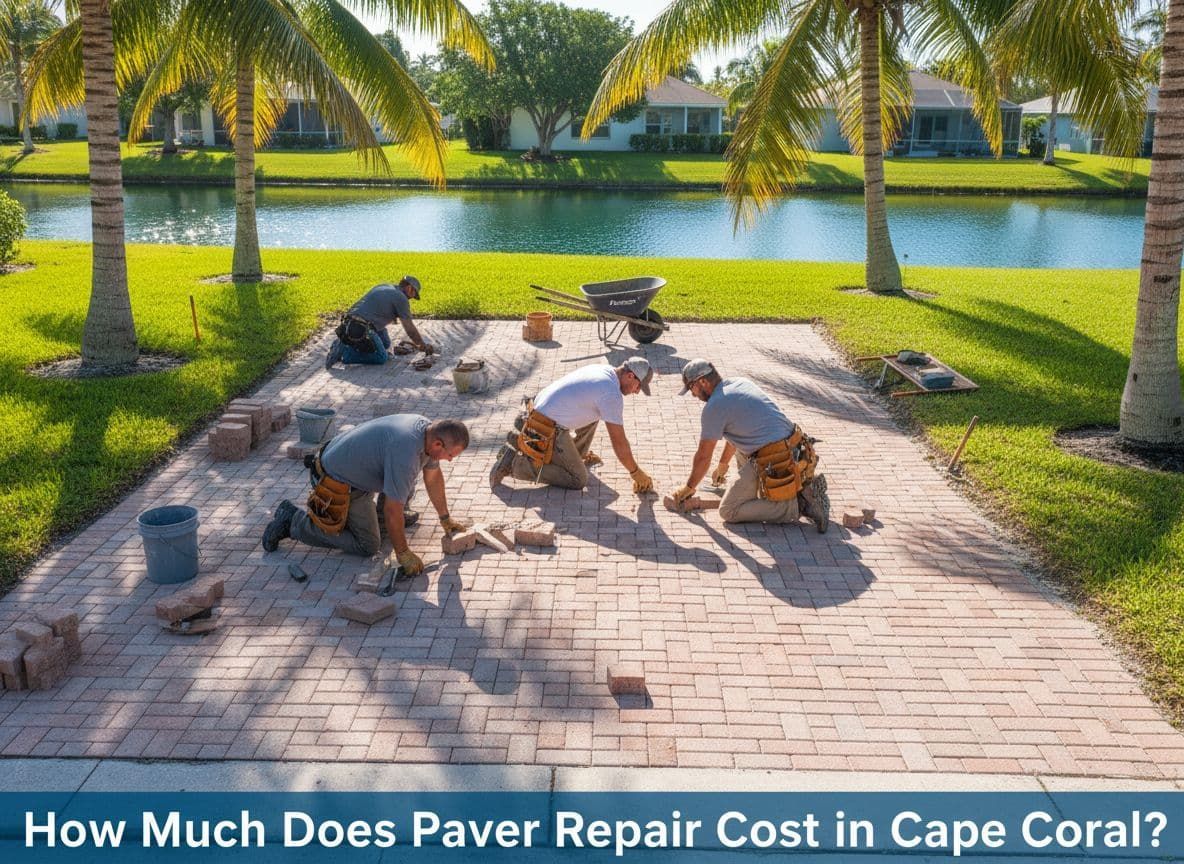The Landscape Installation Process in Cape Coral: What to Expect
The Landscape Installation Process in Cape Coral: What to Expect
Understanding Cape Coral’s Climate and Soil Factors
Cape Coral's subtropical climate plays a significant role in shaping the landscape installation process. With hot, humid summers, a rainy season from June to September, and occasional hurricanes, homeowners need to choose plants and materials that can withstand these conditions. Irrigation systems must be designed to handle both heavy rains and dry spells, while proper drainage is essential to prevent flooding during storms. Additionally, scheduling work around hurricane season ensures safety and minimizes delays. These factors make careful planning an absolute necessity for a successful project.
Soil conditions in Cape Coral also present unique challenges. The area's sandy soil, often mixed with shells or limestone, drains quickly but lacks nutrients and compaction strength. To address this, amendments like compost or topsoil are frequently added to improve fertility and structure. Grading the site properly helps direct water away from structures and prevents erosion. By understanding these local soil characteristics, contractors can create landscapes that thrive despite the challenging environment.
Pre-Project Planning: Budget, Timeline, and Scope
Setting a realistic budget is one of the first steps in any landscape installation project. Homeowners should allocate funds not only for materials and labor but also include a contingency of 10–15% for unexpected costs. Prioritizing must-have features, such as functional hardscapes or shade trees, over nice-to-haves like decorative lighting, ensures the most important elements are covered within the available budget. This approach helps avoid financial strain and keeps the project on track.
Timelines for landscape projects in Cape Coral depend on several factors, including design complexity, permitting requirements, material lead times, and weather conditions. Design and planning might take a few weeks, while obtaining permits could add additional time if needed. Rainy season delays or supply chain issues can further extend schedules. Understanding these variables upfront allows homeowners to set realistic expectations and plan accordingly.
Site Assessment and Consultation
The initial site assessment is a critical step in the landscape installation process. During this phase, professionals measure the property, evaluate soil quality, test drainage patterns, and assess sun and wind exposure. They also identify utility lines, setbacks, easements, and access points for equipment. These details help determine what’s feasible for the space and ensure compliance with local regulations. A thorough walkthrough lays the groundwork for a successful design tailored to the property's unique characteristics.
Equally important is gathering homeowner input during consultations. Preferences for style, functionality, and maintenance levels guide the design brief. HOA rules may dictate specific plant choices, fence heights, or irrigation efficiency standards. By aligning goals with practical considerations, designers create plans that reflect the homeowner’s vision while meeting all necessary requirements. This collaborative effort sets the stage for a cohesive and satisfying outcome.
Design Development and Plant/Material Selection
Once the consultation is complete, designers develop concept plans that outline the proposed layout, elevations, and key features. These plans typically include detailed notes on plant placement, irrigation zones, and lighting schemes. Homeowners review drafts, suggest revisions, and approve the final version before moving forward. Learning how to read a landscape plan empowers clients to visualize the end result and ensure it aligns with their expectations.
Selecting plants suited to Cape Coral’s climate is crucial for long-term success. Florida-friendly species that tolerate heat, salt spray, and drought are ideal choices. Right-plant-right-place principles ensure each species thrives in its designated location, whether it’s full sun, partial shade, or a windy corner. Turf options like St. Augustine or Zoysia grass provide durable groundcover solutions , while native wildflowers attract pollinators and enhance biodiversity.
Hardscape materials play a vital role in both aesthetics and durability. Pavers, edging stones, and mulch not only define spaces but also withstand the region’s heat and humidity. Lighting fixtures should resist corrosion caused by salt air, while permeable surfaces manage stormwater effectively. Thoughtful material selection enhances functionality and ensures the landscape remains beautiful and resilient year-round.
Permits, Codes, and HOA Requirements in Cape Coral
In Cape Coral, certain landscape projects require permits to ensure compliance with city codes. Significant tree removal, irrigation system installation, drainage tie-ins, and large-scale hardscapes often fall under this category. Obtaining permits involves submitting detailed plans, specifications, and plant lists for review. While the process may seem tedious, it ultimately protects homeowners and preserves neighborhood aesthetics.
HOA guidelines further influence landscape design, particularly regarding setback landscaping, sight triangles, and irrigation efficiency. Tree preservation ordinances may limit where vegetation can be removed or altered. Preparing comprehensive submittal packages that address all code and HOA requirements streamlines approval and avoids costly revisions later. Navigating these regulations early saves time and frustration during implementation.
Pre-Construction: Scheduling, Mobilization, and Site Prep
Before construction begins, careful scheduling ensures smooth execution. Material procurement timelines, utility locates, and staging access are coordinated to minimize disruptions. Contractors arrange deliveries so supplies arrive when needed, avoiding cluttered workspaces. Proper mobilization sets the tone for an organized and efficient project.
Demolition and clearing mark the start of site preparation. Existing vegetation is protected with fencing, while erosion control measures prevent sediment runoff. Removing debris and grading the land establishes a clean slate for new installations. Attention to detail at this stage prevents future problems and creates a solid foundation for the landscape.
Rough grading focuses on establishing proper drainage slopes to channel water away from structures. Soil amendments are incorporated to improve fertility and compaction, especially in areas with poor native soil. Compaction testing ensures stability for hardscape features like patios or driveways. Thorough preparation maximizes the longevity and performance of the finished landscape.
Irrigation and Drainage Installation
An efficient irrigation system is essential for maintaining healthy landscapes in Cape Coral. Designers divide the property into zones based on plant needs, using rotors, drip lines, or micro-sprayers as appropriate. Smart controllers and rain sensors optimize water usage, while backflow prevention devices protect potable water supplies. Properly installed systems reduce waste and promote sustainable practices.
Drainage solutions complement irrigation by managing excess water effectively. Swales, French drains, and catch basins redirect runoff away from buildings and paved areas. Downspout management ensures gutters discharge safely without impacting neighbors. Well-designed drainage systems prevent ponding, erosion, and structural damage, enhancing the property’s overall resilience.
Hardscape Construction: Pavers, Edging, and Features
Paver installation starts with meticulous base preparation. Excavation removes loose soil, followed by laying geotextile fabric to stabilize the substrate. Layers of compacted aggregate create a firm foundation, ensuring pavers remain level and secure over time. Patterns and joint sand finishing touches add visual appeal and functionality.
Borders and edging define spaces and prevent shifting of materials. Retaining walls and garden steps comply with load-bearing and slope requirements, enhancing usability and safety. These elements integrate seamlessly into the overall design, providing structure and cohesion to the landscape.
Additional features like rock beds, pathways, and lighting conduits enhance aesthetics and utility. Integrating utilities for future upgrades—such as outdoor kitchens or fire pits—adds versatility. Thoughtfully executed hardscapes elevate curb appeal and increase property value.
Planting and Turf Installation
Proper plant bed preparation promotes healthy root growth. Beds are cleared of weeds, amended with organic matter, and leveled for even planting. Spacing and depth are carefully measured to accommodate mature sizes, while larger trees and palms are staked for stability. These steps ensure plants establish quickly and thrive long-term.
Mulch or stone dressing provides a polished look while suppressing weeds and retaining moisture. Weed barriers may be used beneath these materials for extra protection. Microclimate considerations guide placement, ensuring plants receive adequate sunlight, shelter from wind, and tolerance to salt spray. Thoughtful arrangement maximizes beauty and functionality.
Turf installation completes the landscape transformation. Warm-season varieties like Bermuda or Bahia grass are popular choices due to their heat and drought tolerance. Sod provides instant coverage, while seeds allow customization but require more patience. Proper soil contact, watering-in, and initial mowing guidance ensure turf establishes successfully.
Final Walk-Through, Punch List, and Warranties
A final walk-through gives homeowners the opportunity to inspect the completed project. Creating a punch list addresses any remaining tasks, such as adjusting irrigation coverage or fine-tuning lighting zones. As-built updates document changes made during construction, serving as valuable references for future maintenance or modifications.
Warranties and guarantees offer peace of mind for plants, hardscapes, and irrigation systems. Documentation delivered includes care guides, controller settings, and maintenance schedules. These resources empower homeowners to maintain their landscapes effectively, extending their lifespan and beauty for years to come.
Post-Installation Care and Maintenance Plan
The first 90 days after installation are critical for establishing new landscapes. Regular watering, fertilization, and pruning encourage strong growth, while monitoring for pests and diseases prevents issues from escalating. Preparing for hurricane season involves securing loose items and trimming branches near structures. Diligent care during this period lays the foundation for long-term success.
Long-term maintenance involves seasonal adjustments tailored to Cape Coral’s climate. Fertilizer applications, pest management, and irrigation tune-ups keep the landscape thriving. When replacements or upgrades are needed, calling professionals ensures quality results. A proactive approach to upkeep preserves the investment and enhances enjoyment of the outdoor space.
Project Timeline and Cost Breakdown Examples
Costs for landscape projects vary widely depending on scope and materials. Small projects might range from $5,000 to $15,000, medium-sized jobs from $15,000 to $30,000, and full-yard transformations from $30,000 to $60,000 or more. Factors like limited access, premium materials, or complex irrigation designs can raise expenses. Including a 10–15% contingency ensures flexibility for unforeseen costs.
Timelines also differ based on project size and complexity. Small projects typically take 1–2 weeks, medium ones 2–4 weeks, and larger installations 4–8 weeks or longer. Milestones include design, permitting, material procurement, and weather-related contingencies. Understanding these ranges helps homeowners plan effectively and set realistic expectations.
How to Choose a Cape Coral Landscape Contractor
Vetting potential contractors is essential for a successful outcome. Verify licenses, insurance coverage, and knowledge of local codes and HOA rules. Review portfolios and ask for references to assess past performance. Clear contracts outlining scope, specifications, and payment terms protect both parties and ensure transparency throughout the project.
Asking targeted questions helps clarify expectations. Inquire about plant warranties, preferred irrigation brands, schedule flexibility, change-order processes, and post-installation support. These conversations reveal professionalism and commitment to customer satisfaction. Choosing the right contractor sets the stage for a smooth and rewarding experience.
Common Pitfalls to Avoid in Cape Coral Landscapes
Avoiding common mistakes ensures a landscape’s longevity and functionality. Poor drainage leads to water pooling and root rot, while overwatering sandy soils causes nutrient leaching. Incorrect plant placement results in stress or failure, and insufficient wind/salt tolerance compromises coastal resilience. Addressing these issues during planning prevents costly repairs down the road.
Construction pitfalls include thin paver bases, missing root barriers, inadequate edging , and failing to call for utility locates. These oversights compromise structural integrity and safety. Attention to detail during installation safeguards against future problems and maximizes the landscape’s lifespan.
Eco-Friendly and Florida-Friendly Enhancements
Eco-friendly enhancements benefit both the environment and the homeowner. Native and Florida-friendly plants reduce water consumption and attract wildlife. Pollinator habitats, efficient irrigation systems, rain sensors, and rain gardens promote sustainability. Incorporating these elements reduces resource use and fosters ecological balance.
Permeable pavers, mulch vs. rock trade-offs, compost/topdressing, and integrated pest management further reduce chemical reliance. These strategies improve soil health, manage stormwater, and minimize environmental impact. Thoughtful choices contribute to a greener, healthier landscape that thrives in harmony with its surroundings.
FAQs: The Landscape Installation Process in Cape Coral
How long does a typical landscape installation take in Cape Coral?
Small projects usually take 1–2 weeks, medium-sized ones 2–4 weeks, and larger installations 4–8 weeks or more. Timelines depend on design complexity, permitting, weather, and material availability. Planning for contingencies ensures realistic expectations.
Do I need a permit for my landscape project?
Permits are often required for irrigation systems, significant tree removal, drainage tie-ins, and large hardscapes. Always check city and HOA rules before starting to avoid fines or rework. Compliance ensures safety and adherence to community standards.
What plants perform best in Cape Coral’s climate?
Drought-, salt-, and wind-tolerant plants like sea grape, cocoplum, and muhly grass excel in Cape Coral. Sun-loving varieties include agave and lantana, while shade-tolerant options like ferns and bromeliads thrive in protected areas. Choosing the right plants ensures lasting beauty and low maintenance.
How much should I budget for a new landscape?
Typical budgets range from $5,000 for small projects to $60,000+ for full-yard transformations. Include a 10–15% contingency for unexpected costs and factor in first-year maintenance expenses. Prioritizing essentials ensures the best use of available funds.
When is the best time of year to install landscaping?
Fall and spring offer optimal conditions for planting, with cooler temperatures reducing heat stress. However, dry season installation requires diligent watering, while rainy season work benefits from natural hydration but poses scheduling challenges. Balancing pros and cons ensures timely completion.
Conclusion: Bringing Your Cape Coral Landscape Vision to Life
From initial consultation and design to installation, walk-through, and maintenance, the landscape installation process in Cape Coral is tailored to the region’s unique climate, soils, and codes. Each step builds upon the last, creating a cohesive and functional outdoor space that enhances property value and enjoyment.
If you’re ready to transform your yard, take the next step today. Schedule a consultation , gather HOA guidelines, and prepare a priorities list to guide your project. Remember to plan for climate and drainage, choose Florida-friendly plants, verify permits and HOA rules, invest in solid foundations and irrigation, and follow a clear maintenance plan for long-term success. With careful planning and expert execution, your dream landscape is within reach.







